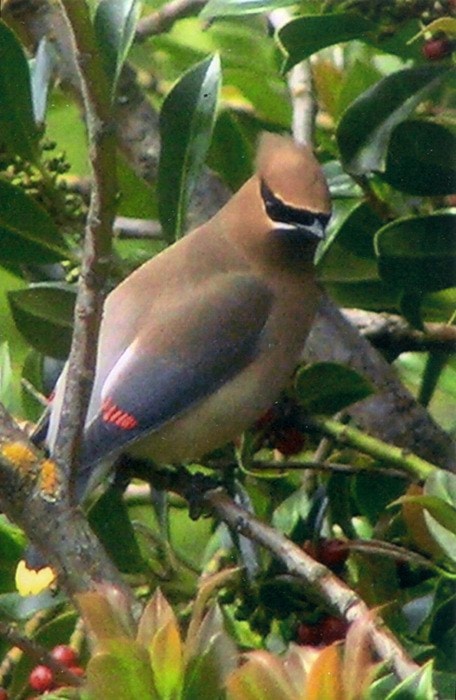A number of times I have made very short outings in the forest around the cabin or a campsite in late evening or in total darkness. As I move over the soft ground under the trees everything is quiet till I hear a sharp chirp, or a flutter of wings and light cracking sounds as beating wings hit twigs in nearby trees. Quite obviously, a bird was hustled from its nighttime perch by my unexpected nocturnal visit. In many cases, by the sound of the initial chirp, I assume, even though I don’t see the bird, that it is a robin. Had it been an owl, with special nocturnal seeing capabilities, it may have been able to find and quietly navigate a safer route of escape from my presence.
Judging by the circumstances, the robin, like many other types of birds I have flushed at night, was set up to spend the night perched on a protected branch in a thick part of the tree. Many birds that perch in tree branches for the night have a built in safety feature that keeps them from falling off the branch while they sleep. Unfortunately, or fortunately, I don’t have that special feature and like Eutychus, and most other people, if I fell asleep in a window opening the results could be disastrous.
The special feature that birds have for staying on a perch while they sleep are “locking” joints in the toes and feet that help keep a firm hold on the branch, preventing them from falling off or swinging beneath. So, they can huddle down on the branch, fluff up their feathers to keep out the cold, stuff their beak and head into that warm coat, and pass the night in total comfort — that is, total comfort for a bird, looking like a small burl on the branch.
I can understand that perched on a branch a bird could maintain pretty good balance but for a bird to hang upside-down all night would be something a bit more amazing. Toby, my cat, was staring intently late one evening into the space under the gable overhang of the cabin. Equipping myself with a headlamp, I went back to investigate. As I began to check out the overhang, a flicker flew out from under the overhang and away into the gathering darkness. Further checking revealed a second flicker snuggled, upside-down, into the corner formed by the underside of the gable roof and a beam. As far as I could see, the only toehold was a single crack where the beam joined the overhang. Amazing! Its head was tucked away somewhere in its plumage. We don’t know how birds are spending the night as we humans, for the most part, are comfortably situated in our dwellings, our thoughts far away from the night world out there!
Another common practice of many birds is to take advantage of the protective shelter of a vacant bird nest for their nighttime sleep. The nest of choice would be one that was built in a thick conifer, away from the trunk but in enough to be away from snow and all but heavy rain that would be shed down the tips of the branches to the ground, keeping the inner part of the tree reasonably dry. Birds perching on a branch for the night would also pick a similar location.
Birds also take to natural cavities in tree trunks and old woodpecker excavations for nighttime shelter. They will even take shelter there in the daytime during severe storms. Once, 30 bluebirds were found in a bird nest box during a late spring snowstorm. It’s a good idea to leave your bird boxes up for winter nighttime bird shelters, but clean them out first. Barns, hay-sheds, carports and many more structures have made a haven for birds seeking nighttime shelter.
Of course birds do all this not just on the night before the Christmas Bird Count, but every night of the year and we seldom think about it or check it out! By the way, if you wish to check in for the Christmas Bird Count, give Sharon a call at 250-428-7289 or Irene at 250-428-7500. The count is planned for Dec. 27. Go out and see if the birds have had a good night!
Now, one more thing. Watch out for the little sugar molecules that clump the blood cells. Hoping you have a safe, healthy and happy holiday season, from all out there!
Ed McMackin is a biologist by profession but a naturalist and hiker by nature. He can be reached at 250-866-5747.
